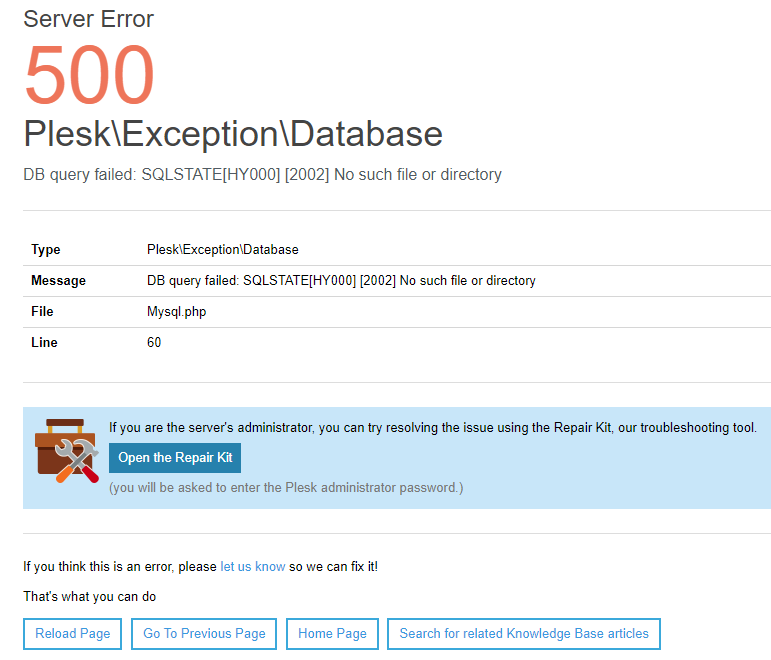Recovering a Corrupted Plesk Server Database (MariaDB/MySQL)

Encountering a database corruption on your Plesk-managed MariaDB or MySQL server can be daunting, but here’s a clear, step-by-step approach to safely recovering your databases and restoring your websites.
Step 1: Identifying the Issue
The common symptom is when the MariaDB/MySQL server refuses to start, reporting errors related to the InnoDB engine (such as corrupted ibdata1 files). Typical messages include:
[ERROR] InnoDB: Corrupted page
[ERROR] Can't open the mysql.plugin table
Step 2: Exporting All Databases (When Possible)
If your database server can start in a recovery mode (innodb_force_recovery), export all your databases immediately:
mkdir -p /root/mysql_backups
Use the following command to export all databases at once:
mysql -u root -p -e 'SHOW DATABASES;' | grep -Ev "(Database|information_schema|performance_schema|sys)" | while read dbname; do mysqldump -u root -p "$dbname" > "/root/mysql_backups/$dbname.sql"; done
Step 3: Preparing a Fresh MariaDB/MySQL Environment
Stop the service:
systemctl stop mariadb
Rename the old corrupted database directory:
mv /var/lib/mysql /var/lib/mysql_old
mkdir /var/lib/mysql
chown mysql:mysql /var/lib/mysql
chmod 750 /var/lib/mysql
Initialize a new database environment:
mysql_install_db --user=mysql --basedir=/usr --datadir=/var/lib/mysql
Restart MariaDB/MySQL:
systemctl start mariadb
Step 4: Import All Databases at Once
Create and import all databases using the following command:
for file in /root/mysql_backups/*.sql; do
db=$(basename "$file" .sql)
mysql -u root -p -e "CREATE DATABASE \`$db\`;"
mysql -u root -p "$db" < "$file"
done
Step 5: Restore Database Users and Permissions
Recreate the database users and permissions for each database:
CREATE USER 'example_user'@'localhost' IDENTIFIED BY 'strong_password_here';
GRANT ALL PRIVILEGES ON example_database.* TO 'example_user'@'localhost';
FLUSH PRIVILEGES;
Repeat these steps for each database user you previously had.
Step 6: Verify Your Setup
Check databases are present:
mysql -u root -p -e "SHOW DATABASES;"
Ensure your websites or apps (e.g., WordPress, Laravel) have correct database credentials in their respective configuration files (like wp-config.php for WordPress):
define('DB_NAME', 'your_database_name');
define('DB_USER', 'example_user');
define('DB_PASSWORD', 'strong_password_here');
define('DB_HOST', 'localhost');
Step 7: Final Check & Repair (Plesk)
Run a repair on Plesk installation to fix any remaining issues:
plesk repair all -y
Best Practices After Recovery:
- Schedule regular database backups.
- Monitor database performance and disk space.
- Consider periodic database health checks.
By carefully following these steps, you can efficiently restore your corrupted Plesk-managed MariaDB/MySQL databases and return your websites to operational status.

